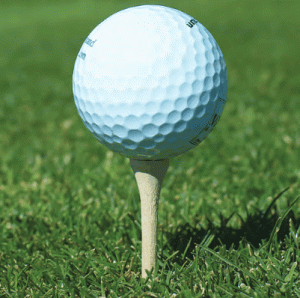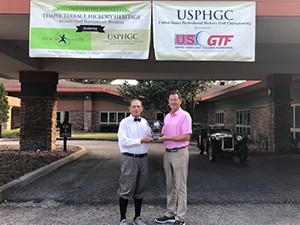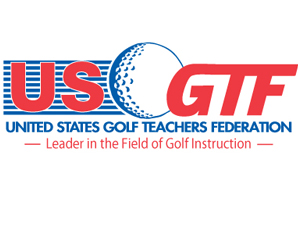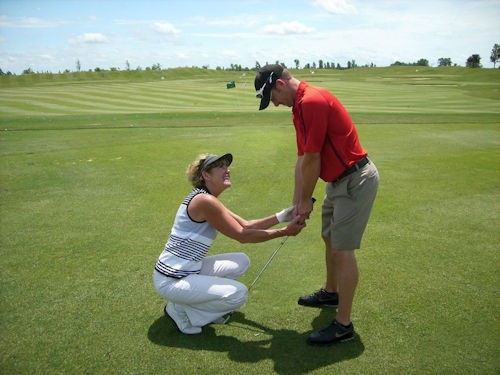Making Sense of Modern Wedge Design
 Years ago, picking a wedge was simple. In addition to your normal iron set, usually 3-PW, you would buy a sand wedge to complement the set. Companies usually had only one choice of sand wedge, usually 56° in loft, and one bounce and grind option that wasn’t even stamped onto the clubhead. Professional golfers who desired a different grind would manually grind down the sole themselves, or have a clubmaker do it for them.
Years ago, picking a wedge was simple. In addition to your normal iron set, usually 3-PW, you would buy a sand wedge to complement the set. Companies usually had only one choice of sand wedge, usually 56° in loft, and one bounce and grind option that wasn’t even stamped onto the clubhead. Professional golfers who desired a different grind would manually grind down the sole themselves, or have a clubmaker do it for them.
That has all gone out the window today. Walk into any golf store that has a decent selection of products, and you will find wedges anywhere from 46° to 64°, with all sorts of bounce angles and sole grinds. S-grind, M-grind, W-grind…it’s enough to make anyone’s head spin. Let’s dig in and try to make some sense of all of this so you can help your students select the wedges suited for their games.
Be aware that many of your students will not even have a sand wedge in their set. A sand wedge is important because the proper bounce angle on the flange helps to get the ball out of sand. In addition, it’s a versatile club that can be used around the greens and even for full shots.
Here’s a brief description of the names of each loft:
• Pitching wedge: 46°, 48°, 50°
• Gap wedge: 50°, 52°, 54°
• Sand wedge: 54°, 56°, 58°
• Lob wedge: 58°, 60°, 62°
• X-wedge: 64° and higher
You will notice some overlap in lofts between descriptions. That’s because that particular loft can serve multiple purposes, depending upon the set makeup. There is also an angle of bounce of the flange, as we mentioned earlier. Normally with pitching and gap wedges, this angle of bounce is fairly low, perhaps in the 4° to 8° range. Sand wedges are usually in the 10° to 14° range, and lob and x-wedges have bounce angles similar to those in pitching and gap wedges.
As a general rule of thumb regarding bounce angles, the steeper the angle of attack, the greater the bounce angle is needed. If we have a steep angle of attack with a low-bounce wedge, it can dig in to the turf and decelerate quickly before the ball has had a chance to leave the clubface, negatively affecting the shot. As another rule of thumb, the softer the turf and ground, the more bounce angle is needed.
Sole grinds and flange sizes are another aspect of wedge design. The bigger the flange and the more the sole is exposed to the ground, the lesser the versatility it provides. The smaller the flange and the less the sole is exposed to the ground (something shaped like a “half-moon”), the more the versatility is available.
A dilemma in selecting a wedge can occur for someone who has a steep angle of attack who plays on firm turf, and someone with a shallow angle of attack who plays on soft turf. This is where sole grind and flange size come into play. For the steep angle/firm turf player, a higher angle of bounce with a smaller flange and a sole grind that is more of a half-moon might be a good option. A player who has a shallow angle of attack who plays on soft turf might benefit from a lower bounce with a fuller sole grind. However, as with many things in golf, these are preferences and may not necessarily work for a particular golfer. If a player is going to hit mainly full shots with a wedge, the bounce angle and sole grind become less important, as the ball is likely to be off the clubface by the time the clubhead interacts with the turf.
Most golfers, despite their attack angle and turf conditions, would likely benefit from playing wedges with more bounce. Wedges used in the sand, in particular, should have bounce angles of at least 10°, and bounce angles of 12° to 14° should be strongly considered.
Wedge design today is a highly involved science and art that has resulted in a dizzying array of choices. Make sure your students have loft gaps of no less than 4° and no greater than 6°, and then help them select their arsenal based on the advice given here. And since many golf retail stores offer 90-day playability guarantees, if the wrong wedge selections are made, they can easily go back and get the right ones for their game.










